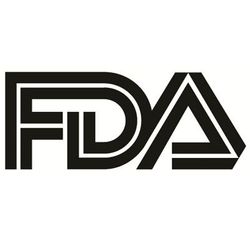
OR WAIT null SECS
Pediatric Atopic Dermatitis Most Effectively Treated with Upadacitinib, Study Finds
These data were the result of a new network meta-analysis looking specifically at children with eczema, highlighting the hierarchy of effectiveness among systemic drugs.
There is a hierarchy of efficacy among systemic treatments for pediatric patients with atopic dermatitis, new findings suggest, with upadacitinib specifically demonstrating the highest level of effectiveness.1
These data represent the conclusion of new research conducted to provide greater access to network meta-analyses using head-to-head comparisons aimed at children with atopic dermatitis. This study was authored by a team of investigators led by Su-Boon Yong, from China Medical University Children's Hospital’s department of allergy, immunology, and rheumatology in Taichung.
Yong et al. highlighted that despite prior research on therapeutic options for adult populations, few pediatric-specific analyses had been conducted in the atopic dermatitis space.2
“Our network meta-analysis addresses this gap by evaluating systemic therapies, including dupilumab, baricitinib, upadacitinib, and abrocitinib, specifically in the pediatric population, providing essential guidance for age-appropriate, evidence-based treatment strategies,” Yong and colleagues wrote.1
Comparing Systemic Drugs for Atopic Dermatitis in Children
The investigative team conducted their literature search across Embase, PubMed, Web of Science, and the Cochrane Library through March 2024 via Boolean search strategies. Their aim in their search was to evaluate dupilumab, upadacitinib, baricitinib, and abrocitinib's efficacy and safety for children and adolescents with atopic dermatitis. The team also used manual searches in review articles for the purposes of identifying any other relevant data on the subject.
The investigators looked at randomized controlled trials (RCTs), with specific focus on research highlighting patients aged 2 - 18 years given systemic therapies. They sought to assess methodological rigor of the RCTs selected in their search, doing so through the application of the Cochrane Risk of Bias Tool. This tool looks at 6 key domains to determine research quality.
The analysis involved an examination of treatment effectiveness that was determined through risk difference (RD), also known as absolute risk reduction (ARR). ARR quantifies the absolute change in outcome probability between treatment and control cohorts. There were 900 articles initially screened, among which 8 studies involving a 2,636 participants in total were found to have met the inclusion criteria.
The effectiveness of baricitinib, dupilumab, upadacitinib, and abrocitinib were compared against placebo in these RCTs, in combination with standard care. The primary outcome that was assessed was any shift in Eczema Area and Severity Index (EASI) scores over the course of 12–16 weeks.
Overall, upadacitinib was noted as having demonstrated the greatest level of efficacy for pediatric patients, with an RD of 0.62 (95% CI: 0.53, 0.71) at a 30 mg dose and 0.52 (95% CI: 0.42, 0.62) at a 15 mg dose. The data indicated the efficacy of abrocitinib at both a 200 mg dose (RD 0.40, 95% CI: 0.29, 0.50) and a 100 mg dose (RD 0.30, 95% CI: 0.20, 0.41). Baricitinib was effective at 4 mg but maintained the lowest efficacy among the evaluated treatments (RD 0.21, 95% CI: 0.06, 0.35).
Dupilumab, which had been administered alongside corticosteroids in weight-based dosing, was noted by the investigative team as having led to significant improvement over placebo (RD 0.43, 95% CI: 0.29, 0.57).
In the analysis's ranking of efficacy, upadacitinib emerged as the most effective medication for children with atopic dermatitis, followed by dupilumab, abrocitinib, and baricitinib, in this order. Such findings allow for valuable comparative insights into the use of systemic medications for children and adolescents with moderate-to-severe atopic dermatitis.
“While our study adheres to PRISMA NMA guidelines, our findings should be interpreted primarily as evidence for adolescent [atopic dermatitis] treatment, with limited generalizability to younger children,” they concluded. “Further targeted research can we truly optimize the clinical management of pediatric [atopic dermatitis] across all developmental stages, from early-life presentations through adolescence.”1
References
Yong S-B, Ting B, Malau IA, et al. Comparative efficacy of biologics and small molecule drugs in treating pediatric atopic dermatitis in patients aged 2–18 years: A 12–16 week network meta-analysis of randomized controlled trials. Pediatr Allergy Immunol. 2025; 36:e70045. doi:10.1111/pai.70045.
Wang L, Wang SN, Zhang RL. Efficacy of dupilumab plus topical corticosteroids in children with atopic dermatitis: a meta-analysis of randomized controlled trials. Immun Inflamm Dis. 2024; 12:e1133. doi:10.1002/iid3.1133.

